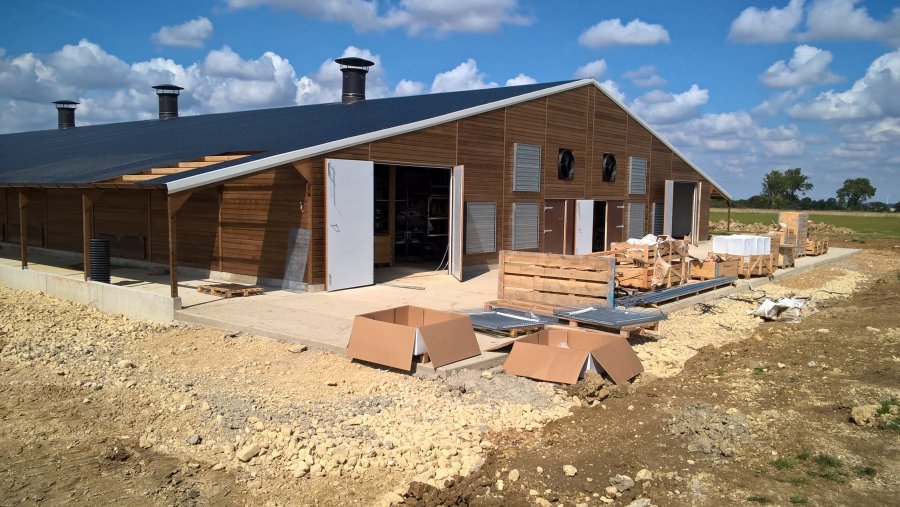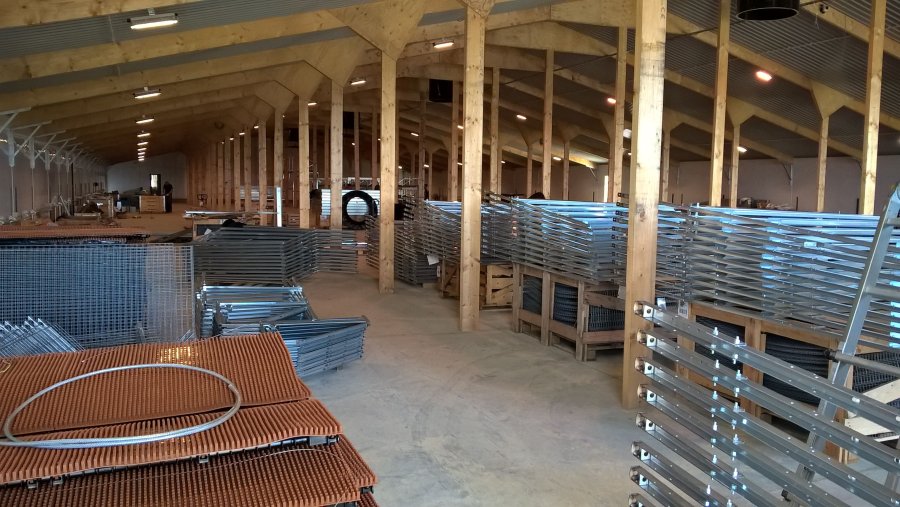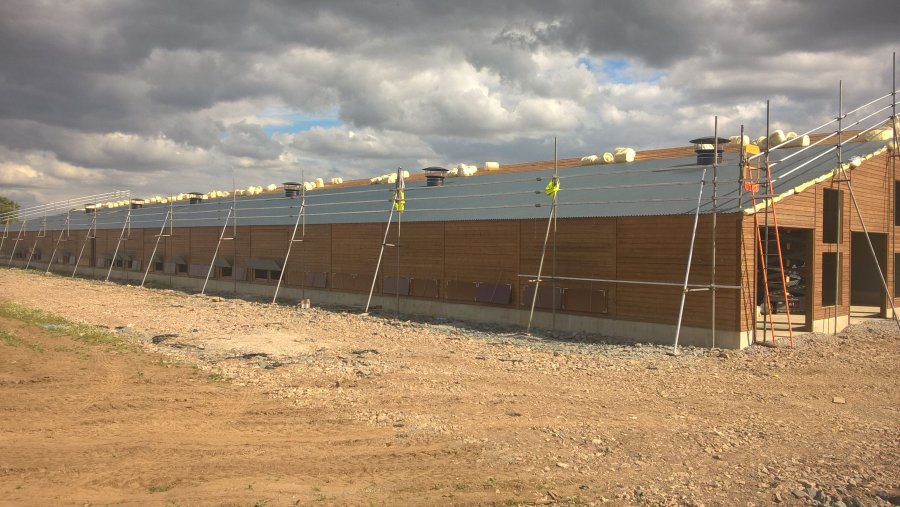
Farmers are feeling the effect of rising raw material prices as a result of the pandemic and unprecedented demand.
Global shortages of key materials, including steel, timber, and cement, have left construction companies and equipment providers struggling with supply.
In turn, this has significantly pushed up the cost of new agricultural buildings.
It has been reported that the price of a new 32,000 bird unit has risen to between £1.2 million and £1.5 million.
John Newcomb, CEO of the Builders Merchants Federation, said demand in the UK and globally continued to outstrip supply.
He added that it showed few signs of slowing during the seasonally busy summer months.
“Record sales of building materials coupled with strong pre-orders and full pipelines of work are putting enormous pressure on the supply chain which, in some sectors, has not fully recovered from the initial impact of Covid.
"Inevitably, all of this is feeding into price inflation, and the expectation is that high demand and tight supply will sustain elevated prices throughout the year.”
According to data from the Department for Business, Energy, and Industrial Strategies (BEIS), the cost of materials for all construction work rose 10.2% in May compared to one year previous.
Although a complex mix of factors lay behind these global shortages, they are thought to stem from a slowdown in production during the initial coronavirus shutdown, with supply chains having remained stretched in the period since.
Construction
Morspan Construction Ltd are specialists in poultry house design and construction. Sales director Donald Gillespie said they had been impacted by the supply chain shortage.
“Input material costs began to increase slowly in December 2020, at that time it was mainly steel but since then we have seen significant price increases in the majority of our raw materials.
"In recent months, it has also become an availability issue with far longer lead times than we have ever experienced before," he said.
“Our good and long standing relationships with suppliers have helped us greatly through these unprecedented times and we have made in-house changes at operational level to minimise cost inflation and order materials well in advance of project commencement.
“At Morspan we have always tried to maintain large stock volumes in order to minimise any price variation and availability but recently this has been increasingly difficult.”
Construction materials demand in the UK also appears to have increased considerably as householders have re-directed their disposable income that they would normally have allocated to eating out or overseas travel to home improvement.
Mr Gillespie said: “I believe that supply chains were initially knocked back by the coronavirus shutdown and have since then struggled to catch up with increased demand as a result of people spending more money at home, as well as major projects in the UK such as HS2 and Hinkley Point.”

“We envisage that in around the second quarter of 2022 supply and demand will have rebalanced and we will return to something similar to the pre-Covid status quo.”
Groundwork
Groundworkers have been particularly hard hit by the raw material crisis, with the cost of concrete baseworks for new sheds increasing.
Some UK cement kilns were already shut for essential maintenance before Covid enforced shutdowns in March 2020.
All of the UK’s cement plants are now up and running but demand is extremely high and the UK remains on allocation for both bagged and bulk cement.
The Mineral Products Association (MPA) said: “This is less a matter of shortages ‘per se’ but more an issue of increased demand outstripping the cement producers’ ability to increase production and delivery at the same rate.
"The question is how long will this pent up demand last before it wanes and the market stabilises?
“Time will tell, but right now the outlook for the next 12 to 18 months suggests a continuing level of high demand.
"Whilst the situation will progressively ease as production catches up, shortages are likely to last for most of the year."
Equipment
Whilst construction companies have been hit by supply difficulties, so have suppliers of equipment.
DraperGroup, who provide ventilation and laying systems for poultry farmers, told us that they are seeing producers delay the installation of new systems because of the increased cost.
Matthew West, Managing Director of DraperGroup, said: “One of our main suppliers has put up prices and added a material surcharge.”
“The increased costs, of both equipment and construction, adds significantly to the payback time for producers and sometimes brings into question the economic viability of their projects.
This means we are starting to see some customers wait to see if prices stabilise, pushing a handful of projects back to next year.”
Matt said that they are suffering most significantly from the shortage of steel: “All of our laying systems are made out of steel and we are seeing the price of it going up on a weekly, if not daily, basis.”
In March 2021 the price of raw steel was 75% higher than it was in August 2020, which has meant that equipment, including feed bins, machinery, and fencing equipment are all going up in price.

Again this a global problem, 2020 saw China become a net importer of steel for the first time in 11 years, pushing up prices across the rest of the world.
Whilst supply and demand are expected to rebalance in the next few months, global dynamics could still lead to rising prices.
A widespread problem
It is not just steel and cement shortages that are affecting producers, but all materials, the entirety of the UK allocation of timber for 2021 has already been sold and it’s price has doubled.
Global supply and demand for timber are not expected to balance out in the near future, but in fact it is thought that the problem is likely to get worse during the third quarter of this year.
There have also been significant price increases and shortages of ironmongery and fixings which means that every piece of equipment that needs a nut or a bolt is more expensive.
Smaller items, that might not seem important, but are integral to the completion of projects, such as silicone, are especially hard to source.
Much of this difficulty stems from a shortage of shipping containers and problems with the global supply chain.
The price per container has risen an astonishing 650% over the last year as a result of bottlenecks of container equipment between the UK, EU, and Asia, with many of the screws and fixings used in this country shipped in containers from the Far East.
